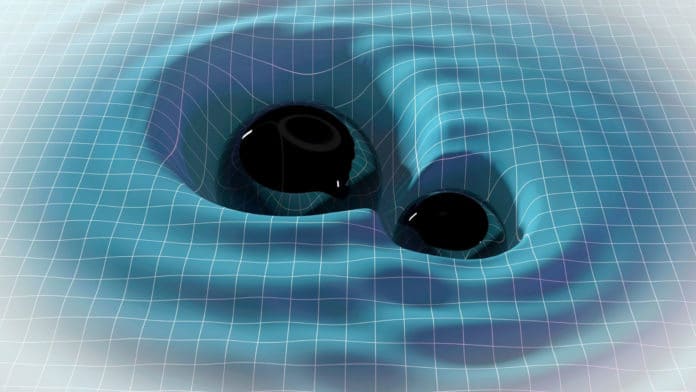A gravitational wave is an invisible ripple in space. Usually generated by massive objects in the universe, these waves are detected using large complex detectors. However, detecting them in detector data is a complex task, requiring state-of-art techniques and supercomputing resources.
This complexity makes it challenging to explain gravitational waves in the laboratory. It is because the live demonstration using a gravitational-wave detector or supercomputer is impossible.
A team of OzGrav scientists across multiple institutions and disciplines has designed a demonstration to explain gravitational-wave searches and signal processing techniques. The demonstration involves data analysis examples.
Lead author of the project James Gardner (who was an OzGrav undergraduate student at the University of Melbourne during the project and is now a postgraduate researcher at the Australian National University), explains: “This demonstration offers some charming insights into a live field of research that students like me should appreciate for its recency compared to the age of most ideas they encounter. It can be used as a teaching tool in physics and engineering undergraduate laboratories.”
Using a newly developed tool called Adelaide’s Mini Interferometer for Gravitational-wave Outreach (AMIGO), scientists demonstrated the principles of laser interferometry and gravitational wave detection. The tool visually shows the interference of light and the sensitivity of Michelson interferometers.
Deeksha Beniwal, a co-author of this study and an OzGrav Ph.D. student at the University of Adelaide, explains: “With AMIGO, the portable interferometer, we can easily share how LIGO uses the fundamental properties of light to detect ripples from the most distant reaches of the universe.”
Changrong Liu, a co-author of this study and an OzGrav Ph.D. student in electrical engineering at the University of Melbourne, explains: “This project offers a great opportunity for electrical engineering students like me to put some of their knowledge into the real and exciting physical world.”
Hannah Middleton, a co-author of the study and an OzGrav Associate Investigator (at the University of Birmingham), explains: “Continuous waves are long-lasting signals from spinning neutron stars. These signals should be present in the detector data all the time, but the challenge is to find them. This demonstration is directly inspired by the techniques developed by OzGrav physicists and electrical engineers in the hunt for continuous gravitational waves!”
Prof. Andrew Melatos, a co-author of this study and leader of the OzGrav-Melbourne node, explains: “We hope that undergraduate educators will emphasize the cross-disciplinary spirit of the project and use it as an opportunity to speak more broadly to students about careers at the intersection of physics and engineering. The future is very bright career-wise for students with experience in cross-disciplinary collaboration.”
Journal Reference:
- James W. Gardner et al. Continuous gravitational waves in the lab: recovering audio signals with a table-top optical microphone. DOI: 10.1119/10.0009409
